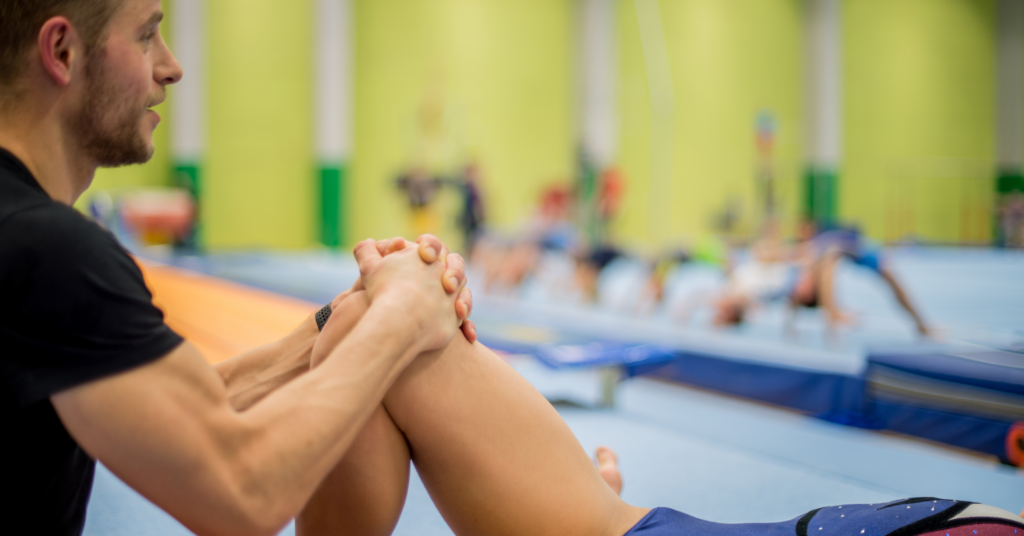Are There Any Differences Between Physiotherapy and Athletic Therapy?

With the ever-changing landscape of healthcare, it can be difficult to keep up with which terms mean what and how they differ from one another. Physiotherapy and athletic therapy are two such terms that often create confusion – but there are some key differences between the two! In this article, we’ll take a closer look at the distinctions between physiotherapy, athletic therapy and their respective applications for different types of patients.
What is Physiotherapy?
Physiotherapists specialize in treating musculoskeletal conditions such as arthritis, sports injuries, back pain, neck pain, and more. The goal of physiotherapy is to help restore mobility, strength, flexibility, and normal function. It typically includes manual therapies like soft tissue manipulation and manipulation techniques alongside exercise prescription. Physiotherapists also use heat or cold therapy, therapeutic ultrasound, kinesio taping, electrical stimulation, and other modalities as prescribed. While physiotherapy aims to restore mobility and strength through various methods, for a more in-depth understanding of these practices, read about what a physiotherapist does.
What is Athletic Therapy?

Physiotherapy is a health profession that focuses on restoring mobility and strength. However, Athletic Therapists focus more on helping people recover from major physical injury, provide emergency care assessments or post-surgical care or teach how to achieve maximum performance while playing a sport. Athletic therapy often includes active rehabilitation methods, similar to the benefits offered by aquatic exercise. Find out how aquatic exercise can complement your recovery and athletic training. They also provide education and advice about lifestyle changes that can help improve outcomes.
What Are the Key Differences Between Physiotherapy and Athletic Therapy?
Physiotherapy and athletic therapy are two distinct professions that share some similarities in their treatment programs but also have key differences in their scope of practice and educational background.
- Scope of practice: Physiotherapists have a broader scope of practice, which includes neurological and cardiovascular health issues, in addition to musculoskeletal disorders On the other hand, athletic therapists focus solely on musculoskeletal disorders, with a particular expertise in treating injuries sustained from sports and physical activities.
- Educational background: Physiotherapists in Canada are required to have a two-year master’s degree on top of a four-year bachelor’s degree. In contrast, athletic therapists only need a four-year bachelor’s degree, which focuses primarily on the musculoskeletal system and on restoring, maintaining, and maximizing movement to relieve pain and increase quality of life.
- Treatment methods: Both physiotherapists and athletic therapists use manual therapy, exercises to restore range of motion and mobility, and work to restore strength. However, athletic therapists may specialize in working with patients through physical activities that are centered on strength-building and recovery, especially in the context of a sports team environment.
- Route to qualification: To become a certified athletic therapist in Canada, one must complete a CATA-accredited athletic therapy program and pass the National Certification Examination overseen by the Canadian Athletic Therapy Association. These programs range from a two-year post-bachelor certificate to a five-year bachelor’s degree. Physiotherapists, on the other hand, complete a two-year master’s degree program at one of the 15 offering universities in Canada, followed by a two-part competency exam and registration with their provincial college.
What Conditions Can Be Treated With Physiotherapy and Athletic Therapy?
Physiotherapy and athletic therapy can be used to treat a variety of conditions in British Columbia. Physiotherapy is a hands-on treatment that can help with pain, inhibited mobility, and soft tissue injuries. It can be used to treat a range of common medical and orthopedic conditions, including:
- Back and neck pain
- Vertigo and dizziness
- ICBC claims
- Musculoskeletal pain or stiffness
- Inflammation
- Headaches
- Injuries to muscles, ligaments, joints, and other soft tissues
- Sports injuries
- Repetitive strains and sprains like carpal tunnel syndrome
- Postural problems
- Muscle weakness
- Chest conditions
- Stress incontinence
- Stroke or other neurological conditions
- Workplace/ WorksafeBC injuries
- Torticollis
- Post orthopedic surgery rehabilitation
- Geriatric rehabilitation
- Nerve entrapment conditions
- Cardiovascular impairments
- Movement dysfunctions

Athletic therapy, on the other hand, is geared towards helping recovery from minor aches and strains. It aims to help you return to peak physical condition, using an active approach to rehabilitation. Athletic therapy can be a great option for:
- Athletes and performers
- Active people who want to recover and strengthen injured body parts
- Those who have recently experienced minor musculoskeletal injuries
Both physiotherapy and athletic therapy involve the creation of an individualized treatment plan that fits your specific needs. Physiotherapy provides the most comprehensive care, while athletic therapy is more focused on musculoskeletal disorders
What Should I Expect During My Physiotherapy or Athletic Therapy Session?
When attending a physiotherapy session, you can expect your physiotherapist to learn about your medical history, assess and diagnose your condition, prescribe a course of exercises and any assistive devices you might need, and educate you about your condition. During atheletic therapy, you may experience some side effects such as worsening of pre-existing conditions, continued pain, only minor improvement in flexibility, mobility and strength, increased metabolism, heart rate or blood pressure changes.
Both physiotherapy and athletic therapy involve the creation of an individualized treatment plan that fits your specific needs. Your therapist will work with you to set goals and track your progress throughout your treatment. Depending on the severity of your condition, you may need to attend multiple physiotherapy or athletic therapy sessions to fully recover. Your therapist will schedule follow-up appointments to monitor your progress and make any necessary adjustments to your treatment plan.
Where Can I Find a Certified Physiotherapist Or Athletic Therapist?
The best way to find a qualified and experienced physiotherapist or athletic therapist is to ask people you know for a recommendation Alternatively, you can use the Physiotherapy Association of BC website’s “Find a Physio: search option https://bcphysio.org/find-a-physio to find a physiotherapist near you. Physiotherapists treat the whole body and work closely with physicians to help people in hospitals, clinics, schools, public health units, home and long-term care programs, and sports medicine clinic.
While searching for a certified physiotherapist or athletic therapist, you might also consider chiropractic care as a complementary treatment. Learn about the benefits of chiropractic care for overall health. For more information about athletic therapy and to find a certified athletic therapist, you can visit the CATA website at www.athletictherapy.org.
Conclusion

Physiotherapy and Athletic therapy play an important role in helping people who have suffered an injury, have a chronic condition, or are looking to improve their mobility, strength, and flexibility. While the two terms are often interchangeable, there are some key differences between them.
Generally speaking, physiotherapy is a more holistic approach, focusing on manual therapies, while athletic therapy has an exercise-based approach. If you’re looking for physiotherapy or athletic therapy, it’s important to consider the qualifications of the practitioner, the conditions they treat, and the side effects of treatment. While deciding between physiotherapy and athletic therapy, it’s also beneficial to explore other therapeutic options like massage therapy. Learn more about the differences and benefits in Physiotherapy vs. Massage Therapy.
For best results, always consult a qualified and experienced practitioner recommended through word of mouth or via the online directories listed above. Physiotherapists and athletic therapists often work together, along with other healthcare professionals, to achieve a mutual goal: making you feel better and getting you back to the activities you enjoy.
As you navigate the differences between physiotherapy and athletic therapy, and consider the best options for your health and wellness journey, remember that professional guidance is just a step away. In Cloverdale, our dedicated team of physiotherapy experts in Clover Hills Rehabilitation is ready to assist you. Whether you’re recovering from an injury, seeking to improve your mobility, or looking to enhance your overall physical health, Physiotherapy in Cloverdale offers personalized care tailored to your unique needs. Don’t wait to take the next step towards optimal health. Contact us today to schedule your appointment and start your journey to better health and well-being.
